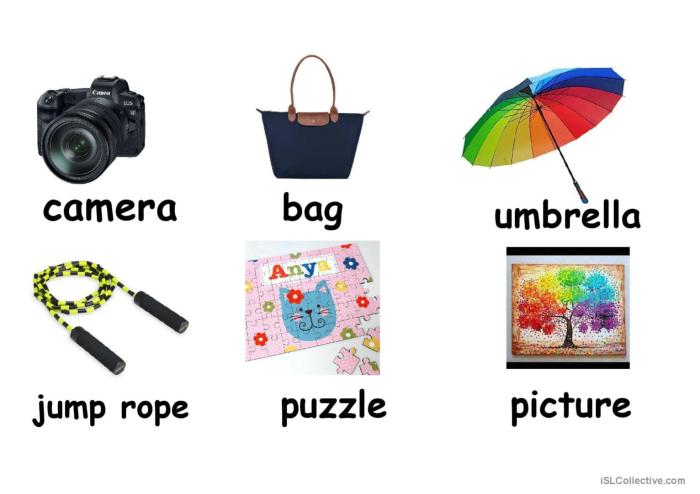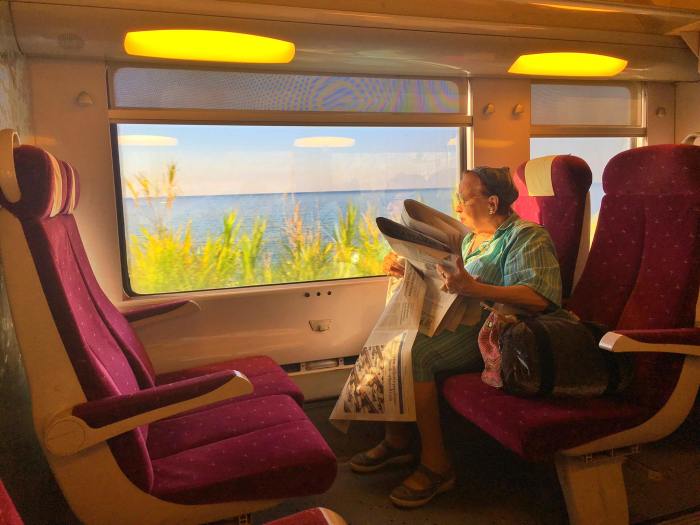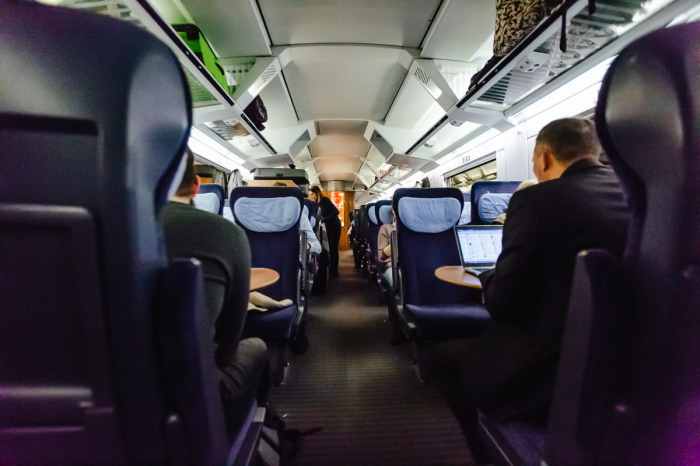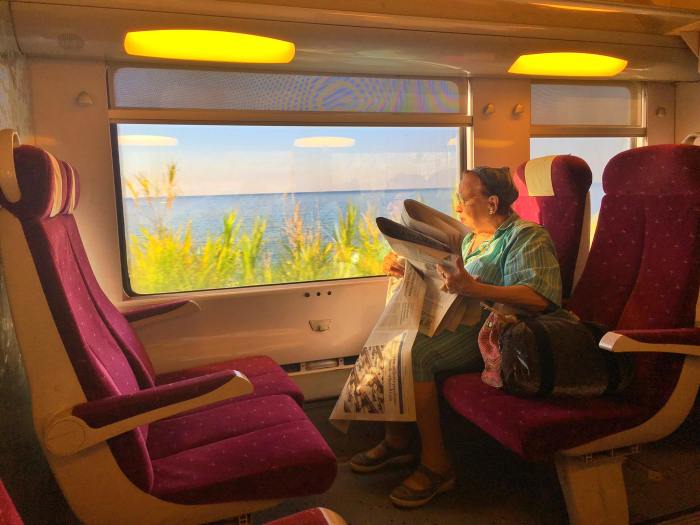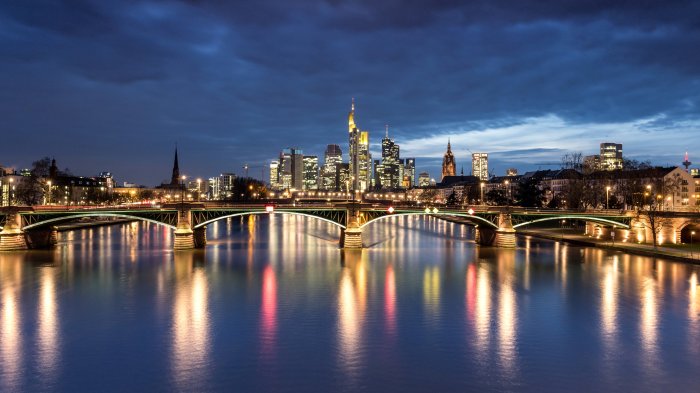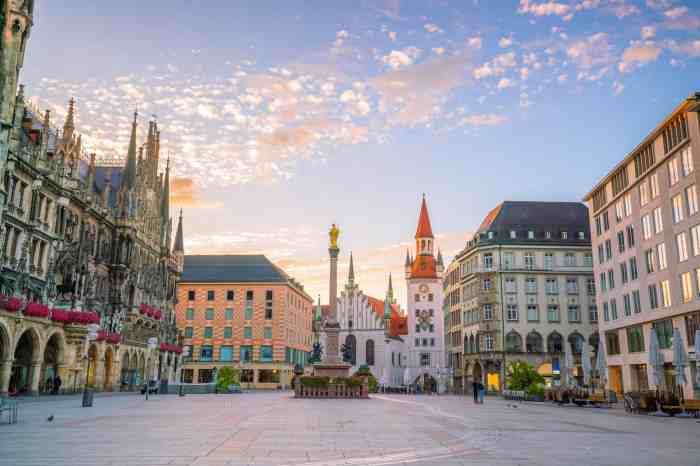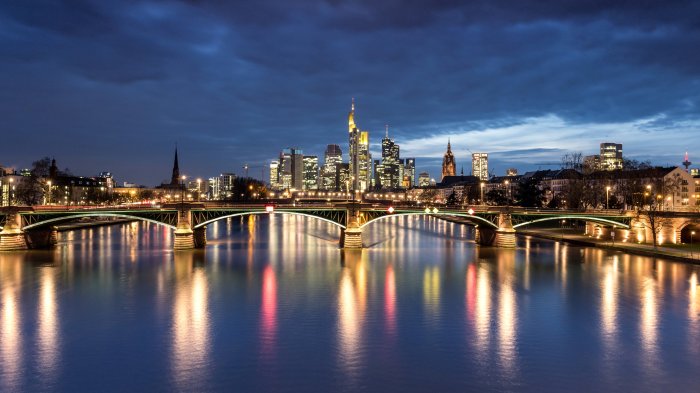Best small towns in Europe for families: Discover charming European villages perfectly suited for family adventures. This comprehensive guide delves into the criteria for selecting the ideal family-friendly destinations, exploring everything from cost considerations to cultural immersion and educational opportunities. We’ll cover key factors families prioritize, highlighting top picks with engaging activities for all ages. Get ready for a captivating journey through Europe’s hidden gems!
From picturesque cobblestone streets to vibrant local markets, these towns offer a unique blend of history, culture, and modern amenities. We’ll explore the best spots for family fun, ensuring that your European vacation is both memorable and stress-free.
Introduction to European Family-Friendly Towns
Europe, a continent brimming with history, culture, and breathtaking landscapes, also offers a treasure trove of charming small towns perfectly suited for family vacations. These aren’t just tourist traps; they’re places where children can explore, parents can relax, and the whole family can create lasting memories. From medieval castles to vibrant city squares, these destinations offer a unique blend of adventure and tranquility, ensuring a truly enriching experience for all ages.Evaluating the “best” small towns for families requires a multifaceted approach.
Factors like affordability, accessibility, kid-friendly activities, safety, and cultural immersion play a crucial role. A balance between historical significance, modern amenities, and a welcoming atmosphere is key. The ideal destination caters to diverse interests, providing something for everyone while fostering a sense of community and shared experiences.
Criteria for Evaluating Family-Friendly Towns
The evaluation process considers several key criteria. Affordability, including accommodation costs, dining expenses, and local transportation, is a primary concern for many families. Easy accessibility, via efficient transportation networks and proximity to major airports or train stations, is crucial. Kid-friendly activities are paramount, ranging from parks and playgrounds to museums, historical sites, and outdoor adventures. Safety is another essential factor, looking at crime rates, public safety measures, and the general environment’s suitability for children.
Finally, cultural immersion is important, enabling families to connect with the local community, its traditions, and its heritage.
A Brief History of Family-Friendly Travel in Europe
Family travel in Europe has evolved significantly over the decades. Initially, trips were often structured around historical sightseeing and educational tours. Over time, a growing emphasis on child-centered experiences emerged. This shift included the development of dedicated family-friendly accommodations, attractions, and activities. The rise of affordable flights and accessible transportation also made it easier for families to explore diverse regions.
More recently, the focus has expanded to include sustainability and cultural immersion, promoting responsible travel and enriching the family experience. This trend is evident in the growing number of eco-lodges, community-based tours, and initiatives emphasizing respect for local cultures and environments.
Key Trends and Developments in Family Travel
Several key trends characterize modern family travel in Europe. The demand for immersive experiences, encompassing cultural immersion, local interactions, and authentic cultural encounters, is growing. Sustainable travel practices are gaining importance, with families increasingly seeking eco-friendly accommodations and activities that minimize their environmental impact. The emphasis on flexibility and adaptability in travel plans is also noteworthy, recognizing the unpredictable nature of family vacations.
Looking for the best small towns in Europe for families? While charming European villages offer a wealth of history and culture, exploring the vibrant muralists art scene in Puerto Rico, like the ones found in muralists art scene puerto rico , might offer a unique family adventure. Ultimately, the best European towns for families will depend on your specific interests and budget.
The growing use of technology for planning and managing family trips is further shaping the modern family travel landscape, enabling families to personalize their experiences and connect with other travelers.
Examples of European Family-Friendly Towns
- Charming Villages of the Loire Valley (France): These picturesque villages offer a blend of history, beauty, and tranquility. The region’s castles and chateaux are perfect for exploring, and the surrounding countryside provides ample opportunities for outdoor activities. The towns often feature local markets and shops where families can experience French culture.
- Medieval Towns of the German Romantic Road: These destinations offer a fascinating glimpse into European history. Families can explore ancient castles, medieval towns, and picturesque landscapes. Many towns boast child-friendly attractions and amenities.
- Coastal Towns of the Amalfi Coast (Italy): The stunning scenery and vibrant culture of the Amalfi Coast attract families seeking adventure and relaxation. Families can enjoy boat trips, hiking, and exploring charming villages with delicious food and vibrant markets. The towns offer a range of accommodations, from budget-friendly hotels to luxurious resorts.
Factors Affecting Family Choice
Choosing the perfect European town for a family is a multifaceted decision. Beyond the picturesque scenery and rich history, families prioritize factors like affordability, educational opportunities, safety, and the availability of enriching activities. Understanding these considerations is crucial for making an informed choice that aligns with the unique needs and aspirations of each family.Families often evaluate potential destinations based on a combination of objective criteria and subjective preferences.
These factors range from the practical, like cost of living and access to healthcare, to the experiential, like cultural attractions and outdoor recreation opportunities. Ultimately, the ideal European town balances practicality with a high quality of life for all family members.
Cost of Living Considerations
Affordability is paramount for families. Housing costs, utility bills, and everyday expenses play a significant role in determining a town’s suitability. Families need to factor in the cost of groceries, childcare, and transportation when assessing the long-term financial impact of a move. Different European countries have varying cost of living indices, and even within a single country, specific towns may demonstrate considerable price differences.
Understanding these variations is key to making a financially sound decision.
Activities and Amenities
Families seek destinations that offer a diverse range of activities for all ages. This includes educational opportunities, cultural attractions, parks, playgrounds, and recreational facilities. The availability of these amenities contributes significantly to the overall quality of life in a town. For example, towns with well-regarded schools, thriving local libraries, and access to museums and historical sites often rank higher on family-friendly lists.
The presence of outdoor spaces, like parks and forests, is also crucial for physical activity and relaxation.
Safety and Security
The safety and security of a destination are vital concerns for families. Factors like crime rates, public safety initiatives, and the overall sense of security within the community directly impact a family’s well-being. Families prioritize environments where they feel secure and comfortable, allowing children to explore and play without undue risk. Researching local crime statistics and community feedback can provide valuable insights into a town’s safety profile.
Educational Opportunities
Families with children often prioritize access to high-quality education. This includes evaluating the local school system, the availability of extracurricular activities, and the overall educational environment. The reputation of schools, the level of parental involvement, and the availability of resources for learning beyond the classroom are all important factors to consider. Some towns boast esteemed international schools, offering a broader range of educational options for families.
Quality of Life Evaluation Criteria
Evaluating the quality of life for families requires a holistic approach, considering numerous factors beyond the tangible. This includes assessing the overall community atmosphere, the level of social interaction, and the accessibility of healthcare facilities. A town’s sense of community, the presence of local events, and the overall well-being of its residents significantly influence the quality of life for families.
Comparative Table of Key Factors
| Factor | Importance (High/Medium/Low) | Explanation |
|---|---|---|
| Cost of Living | High | Housing, utilities, groceries, childcare, transportation costs. |
| Activities and Amenities | High | Schools, parks, museums, libraries, extracurricular activities. |
| Safety and Security | High | Crime rates, public safety, community atmosphere. |
| Educational Opportunities | Medium | School quality, extracurricular activities, resources for learning. |
| Quality of Life | High | Community atmosphere, social interaction, healthcare access, local events. |
Exploring Specific Towns: Best Small Towns In Europe For Families
Unveiling Europe’s hidden gems, these charming small towns offer a unique blend of history, culture, and family-friendly activities. From picturesque landscapes to engaging experiences, these destinations cater to families of all ages, creating unforgettable memories. These towns provide a perfect escape from the hustle and bustle of city life while maintaining a rich cultural heritage.European small towns are often lauded for their authentic experiences, which can be especially beneficial for families.
Exploring the best small towns in Europe for families often involves looking beyond the obvious tourist hotspots. Think about the architectural styles and cultural influences, like the amazing mid-century modern architecture found in Sarasota, Florida. For example, culture design architecture design sarasota midcentury modern architecture provides insights into the fascinating interplay of design and culture.
Ultimately, these kinds of towns offer a richer, more unique experience for families, beyond just the basic tourist trail.
The slower pace of life, coupled with a strong sense of community, allows for deeper connections and richer interactions with the local culture.
Prominent Family-Friendly Towns
These European towns, renowned for their family-friendly attractions and atmosphere, offer something for everyone.
- Hallstatt, Austria: Nestled in the Austrian Alps, Hallstatt boasts stunning alpine scenery. The charming town center is perfect for strolling, and the crystal-clear lake provides opportunities for boat trips and swimming. Families can explore the local salt mines, offering a unique glimpse into the town’s history. The area offers hiking trails of varying difficulty, ideal for active families.
The local cuisine emphasizes fresh, seasonal ingredients, and traditional Austrian dishes are readily available. The town’s culture blends traditional customs with modern amenities, ensuring a memorable experience for all.
- Rothenburg ob der Tauber, Germany: This medieval town, nestled in Bavaria, is a captivating time capsule. Towering medieval walls, half-timbered houses, and cobbled streets transport visitors back in time. Children will adore the many historical sites, and the town’s numerous museums provide enriching experiences. The local cuisine is rich with German specialties like sausages and pretzels. The town’s lively atmosphere and family-oriented events contribute to a joyful atmosphere.
- San Gimignano, Italy: Known for its iconic medieval towers, San Gimignano offers a unique architectural experience. The town center is a delight to explore, and the surrounding hillsides offer stunning views. Families can enjoy cycling or hiking tours. The region is famous for its wines, and a wine tasting experience can be a special treat for adults, while children can enjoy other activities in the area.
The local cuisine emphasizes Tuscan flavors, with a focus on fresh produce and hearty dishes.
- Giethoorn, Netherlands: A picturesque village in the Netherlands, Giethoorn is often called the “Venice of the Netherlands.” The unique charm lies in its network of canals and charming houses. Families can enjoy boat tours, bike rides along the canals, or simply relax and appreciate the tranquility. The local cuisine includes traditional Dutch dishes, like herring and stroopwafels.
The town’s emphasis on nature and tranquility makes it a perfect destination for families seeking a serene escape.
- Cochem, Germany: Located in the Moselle Valley, Cochem is a beautiful town with a historic castle and breathtaking views. Families can enjoy boat trips along the Moselle River, hiking through the vineyards, or exploring the local castle. The town’s proximity to the Rhine River and other attractions makes it a versatile destination for diverse interests. The local cuisine highlights regional specialties like fish dishes and local wines.
Comparative Analysis of Family-Friendly Towns
| Feature | Hallstatt | Rothenburg | San Gimignano | Giethoorn | Cochem |
|---|---|---|---|---|---|
| Scenery | Alpine, lake views | Medieval, walled city | Tuscan hills, towers | Canal network, countryside | Moselle Valley, castle views |
| Activities (Children) | Hiking, boat trips, salt mines | Historical sites, museums, walking tours | Cycling, hiking, wine tasting | Boat tours, bike rides, nature walks | Boat trips, castle visits, hiking |
| Activities (Adults) | Hiking, wine tasting, relaxation | Historical tours, sightseeing, wine tasting | Wine tasting, food tours, sightseeing | Canal tours, relaxation, cultural experiences | Wine tasting, river cruises, sightseeing |
| Cuisine | Fresh, seasonal, Austrian | German specialties, sausages | Tuscan, fresh produce | Dutch classics, stroopwafels | Moselle Valley specialties, fish dishes |
| Culture | Traditional Austrian | Medieval German | Tuscan, Italian | Dutch, peaceful | German, river-faring |
Practical Considerations for Families
Choosing the perfect European town for a family adventure requires careful consideration beyond just charm and culture. Practical factors like transportation, accommodation, and local amenities are crucial for a smooth and enjoyable experience. Understanding the local healthcare system, childcare options, and visa requirements are also essential for a worry-free trip. This section will delve into these practical aspects to ensure your family’s European escapade is truly memorable.
Transportation and Accommodation
European towns often boast excellent public transportation, making getting around easy for families. However, walking and cycling are also popular options, especially in smaller towns. Families should consider the distances between key destinations and factor in travel time. Accommodation options range from cozy apartments to spacious family-friendly hotels. When booking, check for amenities like cribs, high chairs, and kitchenettes, particularly important for families with young children.
Consider the location of the accommodation in relation to local attractions and amenities.
Essential Services and Local Amenities
Accessibility to essential services like healthcare and childcare is paramount. Research local hospitals, clinics, and pediatricians to understand their availability and procedures. Inquiry into childcare options, such as nurseries and after-school programs, is important, especially if you plan to explore local attractions or participate in activities. Consider the availability of grocery stores, pharmacies, and other local amenities, such as parks and playgrounds.
The presence of these amenities contributes significantly to a comfortable and hassle-free family experience.
Visa Requirements and Travel Advisories
Before embarking on your European adventure, meticulously review visa requirements for your nationality. These vary significantly depending on your country of origin and the specific European countries you plan to visit. Ensure all necessary documents are prepared and submitted well in advance. Furthermore, consult up-to-date travel advisories from your government and relevant European authorities. This information is crucial for staying informed about any potential safety concerns, travel restrictions, or other important notices.
This preparation minimizes any potential issues and ensures a safe and well-informed journey.
Practical Tips for Families
| Town | Local Transportation | Emergency Contact Information | Local Customs |
|---|---|---|---|
| Example Town 1 | Local buses, trams, and a well-developed bicycle network. Consider renting bikes for exploring the town. | Local hospital: [Hospital Name and Number], Local Police: [Police Station Number] | Be mindful of local etiquette, such as queueing practices. Dress respectfully when visiting religious sites. |
| Example Town 2 | Efficient metro system, walking is an excellent way to explore. Taxis are readily available. | Local hospital: [Hospital Name and Number], Local Police: [Police Station Number] | Maintain eye contact and be respectful of personal space. Local traditions should be approached with respect. |
| Example Town 3 | Excellent public transportation, including trains and buses. Walking is very accessible. | Local hospital: [Hospital Name and Number], Local Police: [Police Station Number] | Respect local customs and traditions. Learn a few basic phrases in the local language. |
This table provides a framework for understanding the practical considerations for families traveling to different European towns. It Artikels potential transportation options, emergency contact details, and important aspects of local customs. Remember to adapt these guidelines to the specific town you choose. Thorough preparation ensures a smooth and enjoyable experience for your family.
Cultural Immersion and Educational Opportunities

Unveiling Europe’s hidden gems for families often involves more than just picturesque landscapes; it’s about enriching experiences that spark curiosity and foster a love for learning. These European towns offer a wealth of cultural immersion and educational opportunities, tailored to families’ needs and interests. From interactive museums to language immersion programs, the experiences are designed to create lasting memories and broaden horizons.These towns understand the importance of engaging young minds through hands-on learning and culturally relevant activities.
They provide a unique blend of historical exploration, artistic appreciation, and linguistic development, ensuring a well-rounded experience for the whole family.
Family-Friendly Cultural Activities
European towns boast a rich tapestry of cultural experiences, designed to captivate and educate families. These activities often combine entertainment with educational value, making learning a fun adventure. Exploring local markets, attending traditional festivals, and visiting historical sites are just some of the many options available.
- Many towns host regular festivals celebrating local traditions and crafts, providing a vibrant and engaging opportunity for families to immerse themselves in the culture. These festivals often include live music, food stalls showcasing regional delicacies, and demonstrations of traditional crafts.
- Local markets are a treasure trove of unique finds and insights into the region’s culture and heritage. Families can browse handcrafted goods, sample local produce, and interact with artisans, fostering a sense of connection to the community.
- Historical sites, such as castles, medieval towns, and ancient ruins, offer a tangible link to the past. Guided tours, interactive exhibits, and family-friendly activities often make these sites engaging and informative for all ages.
Educational Resources and Programs
Beyond cultural immersion, these towns provide access to valuable educational resources and programs. Language immersion programs and interactive museums are just a few examples of the resources available. These opportunities help children develop a deeper understanding of the local culture and language.
- Many towns offer language immersion programs, designed to introduce children to the local language in a fun and engaging way. These programs often incorporate interactive activities, games, and cultural events to make learning enjoyable and effective.
- Interactive museums, with their hands-on exhibits and educational displays, cater to various age groups and interests. These museums transform learning into a playful and memorable experience.
- Local libraries and community centers often host workshops, classes, and storytimes, providing enriching educational opportunities for families.
Examples of Educational and Cultural Experiences
The following examples showcase the range of family-friendly museums, historical sites, and cultural events offered in these towns. These examples highlight the interactive and educational aspects that make them ideal destinations for families.
- The [Name of Town] Puppet Theatre is renowned for its innovative and engaging performances, appealing to children and adults alike. The performances often incorporate themes that encourage critical thinking and creative expression.
- The [Name of Museum] in [Name of Town] features interactive exhibits showcasing the history of the region, making learning about the past a dynamic and engaging experience. The exhibits are often tailored for families, with age-appropriate activities and displays.
- The [Name of Festival] in [Name of Town] is a celebration of local traditions, featuring live music, traditional dance performances, and artisan demonstrations. The event offers a vibrant cultural experience for the entire family.
Educational and Cultural Experiences Table
This table summarizes the educational and cultural experiences available in select towns, highlighting family-friendly aspects.
| Town | Cultural Activities | Educational Programs | Family-Friendly Highlights |
|---|---|---|---|
| [Town Name 1] | Local festivals, markets, historical tours | Language immersion classes, interactive science center | Family-friendly guided tours, playgrounds |
| [Town Name 2] | Traditional crafts demonstrations, theatre performances | Children’s art workshops, nature walks | Interactive exhibits, playgrounds, family-friendly restaurants |
| [Town Name 3] | Historical site visits, museums | Language exchange programs, educational theatre | Guided tours for families, picnic areas |
Visual Representation of the Towns
Discovering the best small European towns for families isn’t just about the activities and amenities; it’s about the atmosphere, the visual appeal, and the overall feeling of place. The visual characteristics of a town can profoundly impact a family’s experience, shaping memories and fostering a sense of belonging. Imagine strolling through cobblestone streets, surrounded by picturesque architecture, or enjoying a picnic in a vibrant park.
These visual elements contribute significantly to the overall charm and appeal of a family-friendly destination.
Architectural and Scenery Characteristics
European towns often boast a unique architectural heritage, reflecting their rich history and cultural identity. From the charming half-timbered houses of Germany to the pastel-hued buildings of the Italian countryside, each town offers a distinct visual experience. These architectural styles, coupled with the natural landscapes, create a captivating and memorable environment for families. Imagine the intricate details of a medieval castle overlooking a picturesque valley, or the charming facades of brightly colored houses lining a narrow street.
Finding the best small towns in Europe for families is a joy! Exploring charming villages with cobblestone streets and picturesque landscapes is always a treat. Thinking about the amazing attractions, parks, and gardens of the attractions parks gardens empire state trail completed new york to gives me ideas for family-friendly adventures. Ultimately, though, the best European small towns offer a unique blend of history, culture, and kid-friendly activities, making them perfect destinations for memorable family vacations.
These visual elements paint a picture of the town’s past and present.
Parks, Playgrounds, and Outdoor Spaces
The availability and design of parks and playgrounds are crucial factors for families. Well-maintained parks with ample green spaces, playgrounds, and recreational areas provide opportunities for children to play and explore while parents relax and enjoy the surroundings. These outdoor spaces are essential for promoting physical activity and fostering a sense of community. Imagine a vibrant park with a splash fountain, swings, and climbing structures, perfect for families to spend hours of fun together.
Visual Showcase of Family-Friendly Towns
| Town | Description | Image Description | Map Description |
|---|---|---|---|
| Heidelberg, Germany | Heidelberg’s charm lies in its medieval castle perched atop a hill, overlooking the city. The picturesque Altstadt (Old Town) boasts charming cobblestone streets and colorful buildings. Numerous parks, including the Philosophenweg (Philosopher’s Path), offer scenic walking trails. | A photo of Heidelberg Castle prominently featured, with the surrounding old town visible in the foreground, showcasing its half-timbered houses and cobblestone streets. The scene is illuminated by natural light, highlighting the architectural details. | A map pinpointing Heidelberg’s location in Germany, with a focus on the Old Town area, showing the castle’s position and nearby parks. |
| San Gimignano, Italy | San Gimignano, a medieval hilltop town in Tuscany, is renowned for its distinctive towers. The narrow streets, picturesque architecture, and stunning views of the surrounding countryside create a magical atmosphere. Numerous plazas and parks provide spaces for families to relax and enjoy the scenery. | A photograph showcasing the iconic towers of San Gimignano against a backdrop of the Tuscan countryside. The photo emphasizes the town’s vertical architecture, highlighting the details of the towers and the surrounding landscape. | A map displaying San Gimignano’s location in Tuscany, Italy, highlighting the town’s position on a hilltop and its proximity to other Tuscan towns. |
| Annecy, France | Nestled on the shores of Lake Annecy, this picturesque town offers stunning views and a relaxed atmosphere. The old town’s charming streets, lined with cafes and shops, are a delight to explore. The lake itself provides opportunities for boating, swimming, and picnics, making it an ideal destination for families. | A panoramic view of Lake Annecy, with Annecy’s old town nestled on the shore. The photo should capture the tranquility of the lake and the vibrant color of the town’s buildings. | A map showing Annecy’s location in the French Alps, emphasizing the lake’s presence and the town’s proximity to the surrounding mountains. |
Cost and Budget Considerations

Europe’s charm often comes with a price tag, but savvy planning can transform a potentially daunting expense into a memorable family adventure. Understanding the cost breakdown for accommodation, food, activities, and transportation is crucial for budgeting effectively. Careful consideration of these factors allows families to tailor their experiences to their specific financial situations.Budgeting for a family trip requires a comprehensive approach that extends beyond initial costs.
Contingency planning for unexpected expenses, such as medical emergencies or lost belongings, is equally important. This proactive approach ensures a smooth and enjoyable journey.
Accommodation Costs, Best small towns in europe for families
Accommodation costs vary significantly across European towns. Budget-friendly options, such as hostels or apartments rented through platforms like Airbnb, can dramatically reduce expenses. Consider booking accommodations in advance, especially during peak seasons, to secure better rates. For example, a family of four might find a cozy apartment for €80-€150 per night in a charming village, while a hotel in a major city could easily exceed €200.
Food Costs
Eating out in Europe can be an enriching experience, but it can also be costly. Supermarkets and local markets provide affordable options for groceries. Packing lunches and snacks can significantly reduce dining-out expenses. Families can enjoy local delicacies at affordable prices by choosing local markets and smaller restaurants.
Activity Costs
European towns offer a wide array of activities, from historical tours to amusement parks. Many attractions offer discounted rates for families or children. Consider purchasing combined tickets for multiple attractions to save money. Free activities, such as exploring parks or taking a stroll along the waterfront, can provide valuable experiences without breaking the bank.
Transportation Costs
Public transportation systems in many European towns are efficient and affordable. Consider purchasing travel passes to save on individual journeys. Walking and cycling are often viable and enjoyable options for shorter distances. Train travel between towns is often a convenient and cost-effective option.
Cost-Saving Strategies
- Accommodation: Opting for apartments or hostels instead of hotels can substantially reduce accommodation costs. Consider booking in advance to secure better deals.
- Food: Preparing some meals and packing snacks is a practical way to reduce food costs. Take advantage of local markets and grocery stores for affordable options.
- Activities: Research free activities and attractions, and look for discounts or combined tickets.
- Transportation: Utilize public transportation, such as trains or buses, where available. Explore walking and cycling options for shorter distances.
Budget-Friendly Activities
- Parks and Gardens: Many European towns boast beautiful parks and gardens that offer free access. Enjoy picnics, playing games, or simply relaxing in the natural surroundings.
- Local Markets: Immerse yourselves in local culture and find fresh produce, local crafts, and delicious food at affordable prices.
- Walking Tours: Discover hidden gems and historical landmarks on free walking tours. Many cities offer these tours for a truly immersive experience.
- Museums: Many museums offer discounted rates for families or children. Check for specific promotions or days with free admission.
Estimated Costs Table
| Town | Accommodation (family of 4, 3 nights) | Food (3 days) | Activities (2 days) | Transportation |
|---|---|---|---|---|
| Town A | €250-€350 | €150-€200 | €50-€100 | €50-€75 |
| Town B | €200-€300 | €100-€150 | €40-€80 | €40-€60 |
| Town C | €150-€250 | €120-€180 | €30-€70 | €30-€50 |
Note: Prices are estimates and can vary based on seasonality, specific choices, and availability.
Safety and Security for Families
Family safety is paramount when choosing a destination. Knowing the safety measures in place, crime rates, and emergency services available is crucial for peace of mind. This section explores the safety and security aspects of each town, focusing on the well-being of families during their visit.
Crime Rates and Emergency Services
European towns generally have low crime rates, but variations exist. Reliable sources, like local police departments and national crime statistics, provide insights into the crime rates in specific towns. Families should research these resources to understand the local context and prepare accordingly. Emergency services, including police, fire, and ambulance, are usually well-equipped and readily available in European towns.
Knowing the emergency numbers and procedures for the specific town is essential. For example, knowing the local emergency number and how to report a lost child or minor incident will provide reassurance.
Safety of Local Transportation and Public Spaces
Public transportation in European towns is generally safe and efficient. However, families should be aware of potential hazards, like crowded areas during peak hours or specific routes with less frequent service. Public spaces, such as parks and squares, are usually well-maintained and monitored. However, it is wise to be aware of your surroundings and take necessary precautions, such as keeping children close and being vigilant about belongings.
Staying Safe While Exploring the Towns
Families can enhance their safety by practicing common-sense precautions. Maintaining awareness of surroundings, keeping valuables secure, and informing someone of their itinerary are crucial steps. Using reliable maps and navigation apps can be beneficial during explorations. Knowing the local laws and customs, and being respectful of the environment, are essential for a positive and safe experience. Familiarizing yourself with the town’s layout and key landmarks will also make it easier to navigate safely.
Safety Measures and Procedures for Families
| Town | Crime Rate (General Estimate) | Emergency Services | Local Transportation Safety | Public Space Safety | Tips for Families |
|---|---|---|---|---|---|
| Example Town 1 | Low | Efficient and readily available | Safe, with potential for crowded areas | Well-maintained, monitored | Keep children close, be aware of surroundings |
| Example Town 2 | Very Low | Highly efficient | Safe and frequent service | Well-maintained, high security | Inform someone of itinerary, be aware of local customs |
| Example Town 3 | Low | Adequate, but may need pre-booking | Safe, with infrequent service on some routes | Clean, monitored, but may have less frequent security patrols | Use reliable navigation apps, familiarize yourself with the town layout |
Note: This table is a sample and should be replaced with specific data for each town.
Final Review
In conclusion, finding the best small towns in Europe for families is a rewarding exploration. This guide provides a roadmap for families seeking a balance of cultural immersion, educational experiences, and practical considerations. Whether you’re looking for historical sites, outdoor adventures, or simply a relaxing escape, this guide will equip you with the knowledge to choose the perfect destination.
Enjoy your family adventure in Europe!








